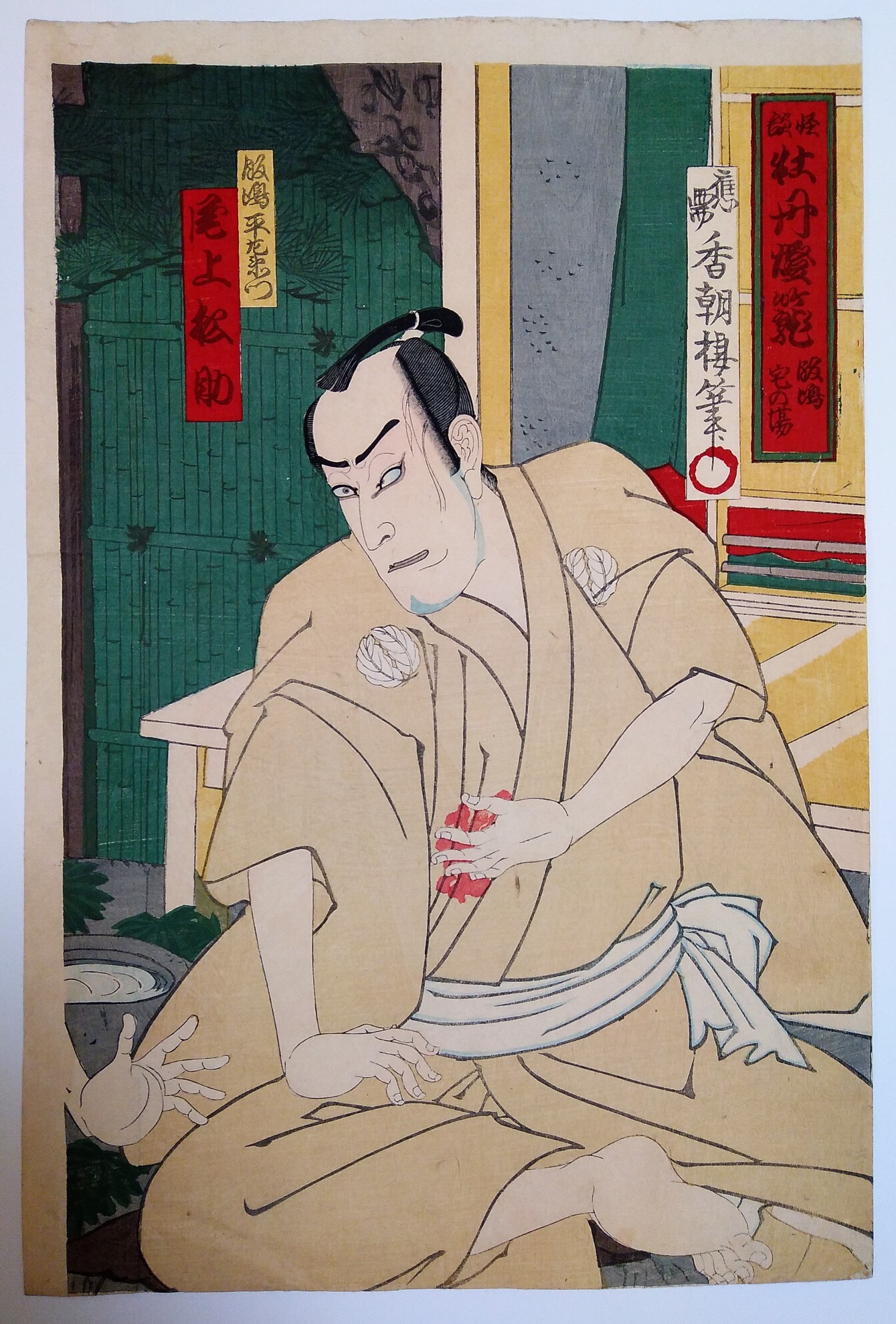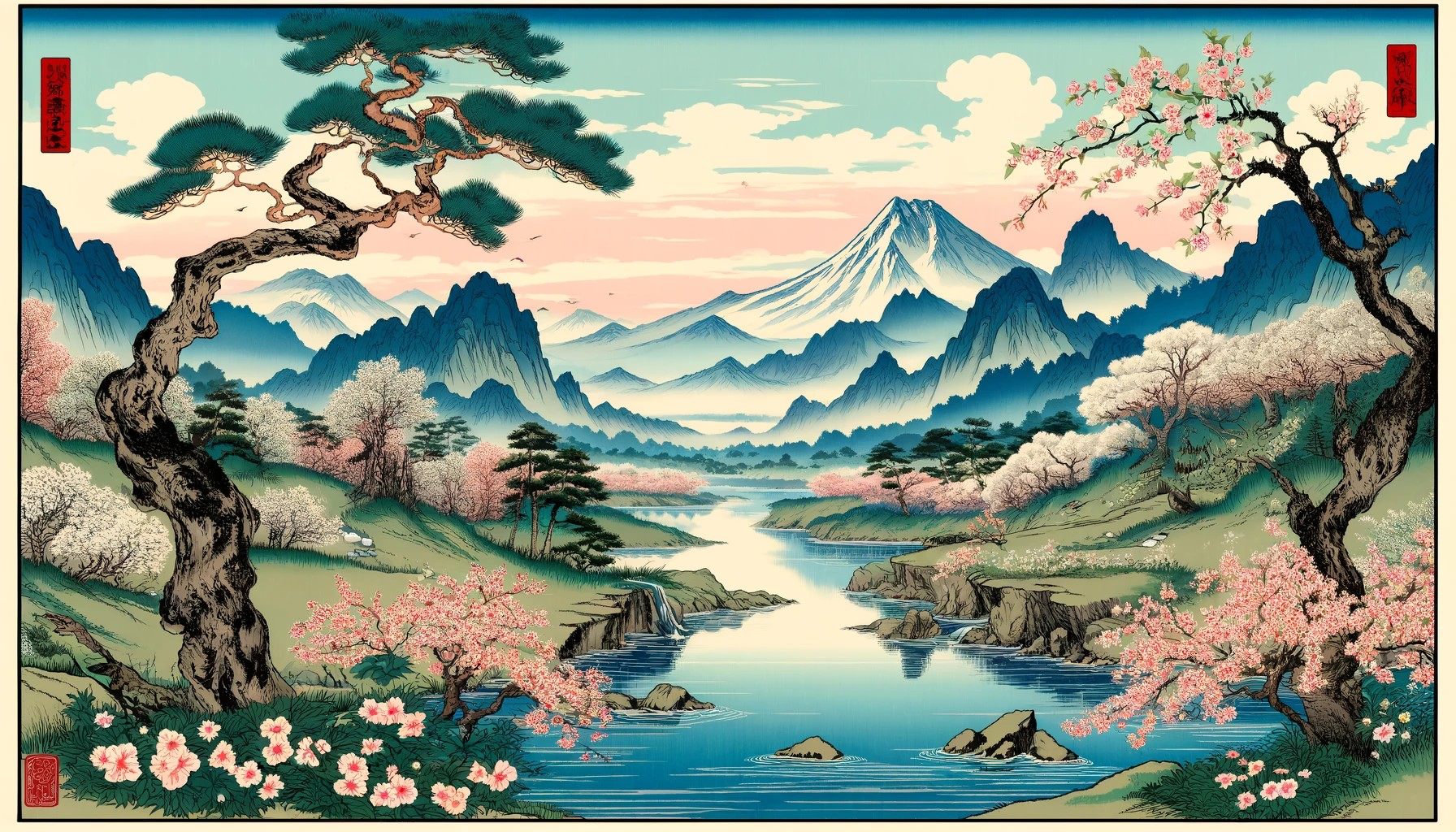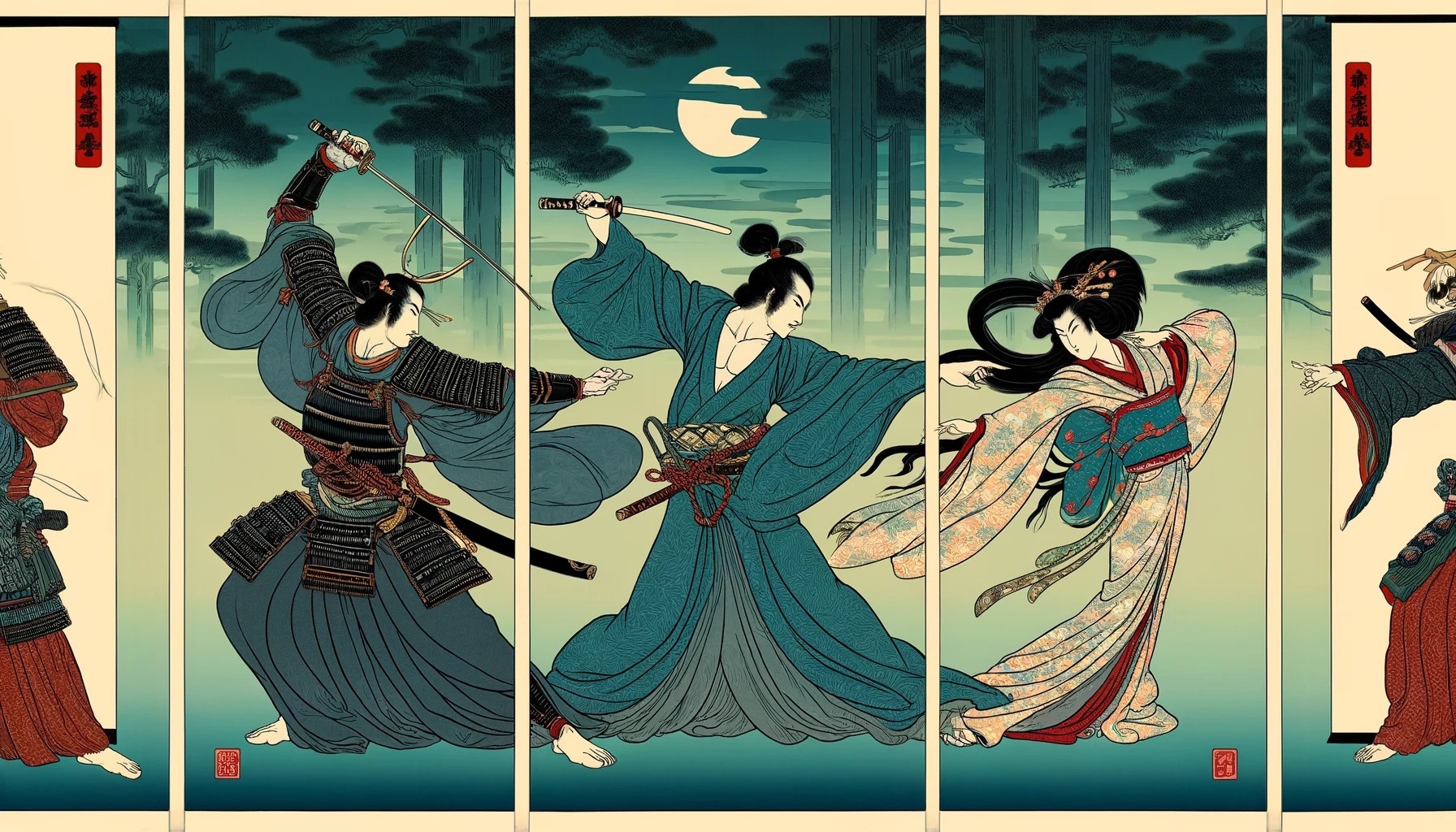Utagawa Kunisada III ( 1848 ~ 1920 )
Utagawa Kunisada III (三代目歌川国貞), born in Edo (now Tōkyō, 東京) as Hidehisa Takenouchi (竹内 英久) in 1848,
was an artist from the Meiji period (1868-1912) known for his prints of kabuki actors. He initially studied under Utagawa Toyokuni
III (also known as Kunisada I) from the age of eleven and continued his artistic training under Toyokuni IV (also known as Kunisada II)
after his teacher's death. His childhood name was Chōtarō (朝太郎) and his adult name was Eikyū (栄久), while his maternal surname was Takeuchi (竹内).
Throughout his career, he changed his artistic names several times, adopting Kunimasa IV (四代目歌川国政) and later, in 1889, taking the name Kunisada
III, following the succession line of the Utagawa school. He subsequently adopted other art names such as Kōchōrō (香蝶楼) and Toyosai (豊斎),
and even attempted to use Toyokuni IV, but, since it was already claimed, he opted for Toyokuni V.
Kunisada III is mainly remembered for his bunmei kaika-e (文明開化絵), prints depicting the modernizing Japan of the Meiji era, and yakusha-e (役者絵),
or portraits of kabuki actors, particularly those of Ichikawa Sadanji (初代市川左團次). Besides actor prints, he also worked on book illustrations, game
boards (e-sugoroku), and other popular Meiji period genres such as senso-e (war prints) and kaika-e (modernization pictures).
The works of Kunisada III have been studied for their artistic and historical value, contributing to our understanding of Japanese art and culture during a
period of significant transition.

Ichikawa Yaozō VII
Kabukiza gogatsu kyōgen

Nakamura Fukusuke V as Geisha Kosome
Three Ansei sake cup

Onoe Matsusuke IV as Iijima Eizaemon
Ghost tale: the peony lantern


